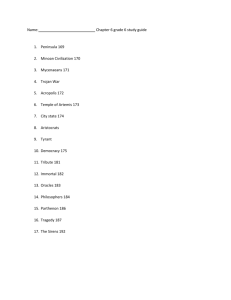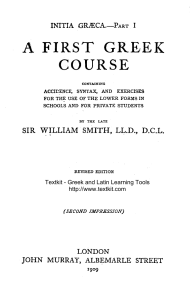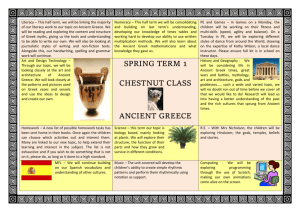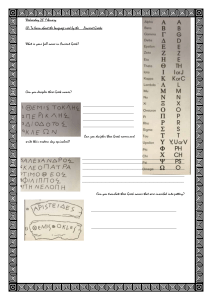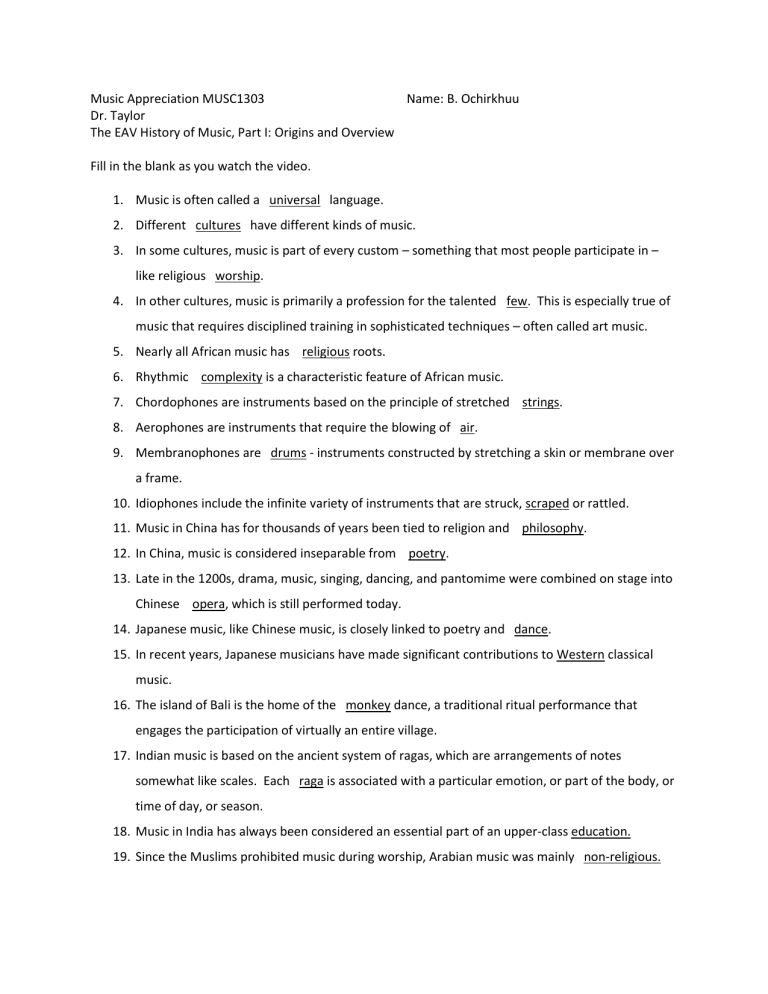
Music Appreciation MUSC1303 Name: B. Ochirkhuu Dr. Taylor The EAV History of Music, Part I: Origins and Overview Fill in the blank as you watch the video. 1. Music is often called a universal language. 2. Different cultures have different kinds of music. 3. In some cultures, music is part of every custom – something that most people participate in – like religious worship. 4. In other cultures, music is primarily a profession for the talented few. This is especially true of music that requires disciplined training in sophisticated techniques – often called art music. 5. Nearly all African music has religious roots. 6. Rhythmic complexity is a characteristic feature of African music. 7. Chordophones are instruments based on the principle of stretched strings. 8. Aerophones are instruments that require the blowing of air. 9. Membranophones are drums - instruments constructed by stretching a skin or membrane over a frame. 10. Idiophones include the infinite variety of instruments that are struck, scraped or rattled. 11. Music in China has for thousands of years been tied to religion and philosophy. 12. In China, music is considered inseparable from poetry. 13. Late in the 1200s, drama, music, singing, dancing, and pantomime were combined on stage into Chinese opera, which is still performed today. 14. Japanese music, like Chinese music, is closely linked to poetry and dance. 15. In recent years, Japanese musicians have made significant contributions to Western classical music. 16. The island of Bali is the home of the monkey dance, a traditional ritual performance that engages the participation of virtually an entire village. 17. Indian music is based on the ancient system of ragas, which are arrangements of notes somewhat like scales. Each raga is associated with a particular emotion, or part of the body, or time of day, or season. 18. Music in India has always been considered an essential part of an upper-class education. 19. Since the Muslims prohibited music during worship, Arabian music was mainly non-religious. 20. Before European colonists came to the Americas, the Indians of the western hemisphere had their own music, which was mostly vocal. 21. The vivid color of Spanish music combined with the throbbing rhythms of African music are the strongest elements in Latin American music today. 22. Latin American music has given rise to many distinctive dance styles. 23. Music in all its amazing variety is one of our most valuable cultural legacies. Yet, today, many unique lesser-known styles are being threatened with extinction. 24. Music has always been associated with magic, and by extension musician have often been viewed as having magical powers. 25. Although we cannot date its beginnings, evidence of music as much as for thousand years old has been found in Mesopotamia. 26. The ancient Egyptians probably learned something about music from the Mesopotamians. 27. The Old Testament describes King David as a composer, performer, and the one who soothed King Saul by his music. 28. Psalms were often sung in one of the oldest musical forms we know: call and response. 29. The ancient Greeks held music in the highest esteem, relating it to science, mathematics, politics, and philosophy. 30. Ptolemy, Pythagoras, and other Greek scientists and mathematicians were among the first to develop music theory. For them, music was closely tied to astronomy. 31. As much as we know about the importance the Greeks placed on music, we know practically nothing about the music itself. 32. The ancient Romans, whose civilization grew as Greek civilization declined, did not share the Greek esteem for music. Music became mainly a form of mass entertainment, designed to appeal to uneducated popular tastes. 33. Hidden away in the catacombs under the city of Rome, early Christians were strongly affected by all these traditions as they shaped their own forms of religious observance, and of music.

